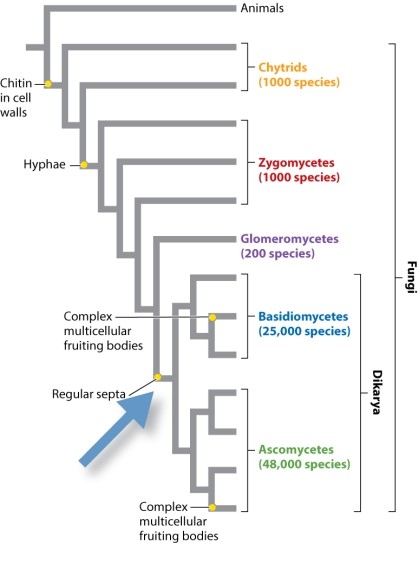Multiple Choice
Consider the phylogeny (Fig. 34.15) below. Imagine that the trait "complex multicellular fruiting bodies" actually was present in the common ancestor indicated by the arrow. What would its presence in the common ancestor mean for the evolution of fruiting bodies in the group Dikarya? 
A) The group Glomeromycetes lost complex multicellular fruiting bodies.
B) The group Dikarya has members that didn't evolve complex multicellular fruiting bodies.
C) The group Dikarya has members that lost the trait of complex multicellular fruiting bodies.
D) Because only one trait can evolve at a node, regular septa would have evolved at some other place on the phylogeny.
Correct Answer:

Verified
Correct Answer:
Verified
Q67: Yeasts are unicellular fungi that do not
Q68: Which of the following statements is TRUE
Q69: Which of the following statements is TRUE
Q70: Mushrooms growing in your backyard are examples
Q71: Why might endophytes be able to help
Q73: Lichens are able to obtain nutrients from
Q74: Basidiomycetes are the only fungal group that
Q75: Close observation of the fruiting bodies of
Q76: A researcher discovers a new species of
Q77: During which of the following processes does